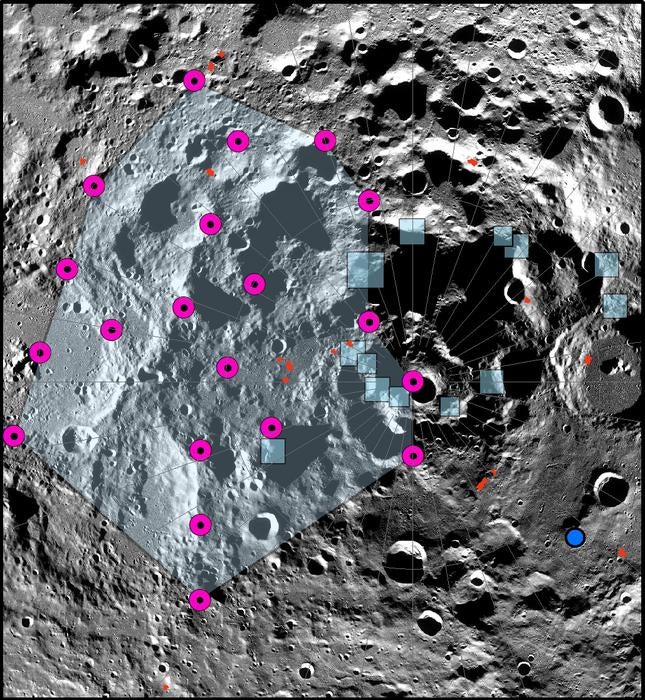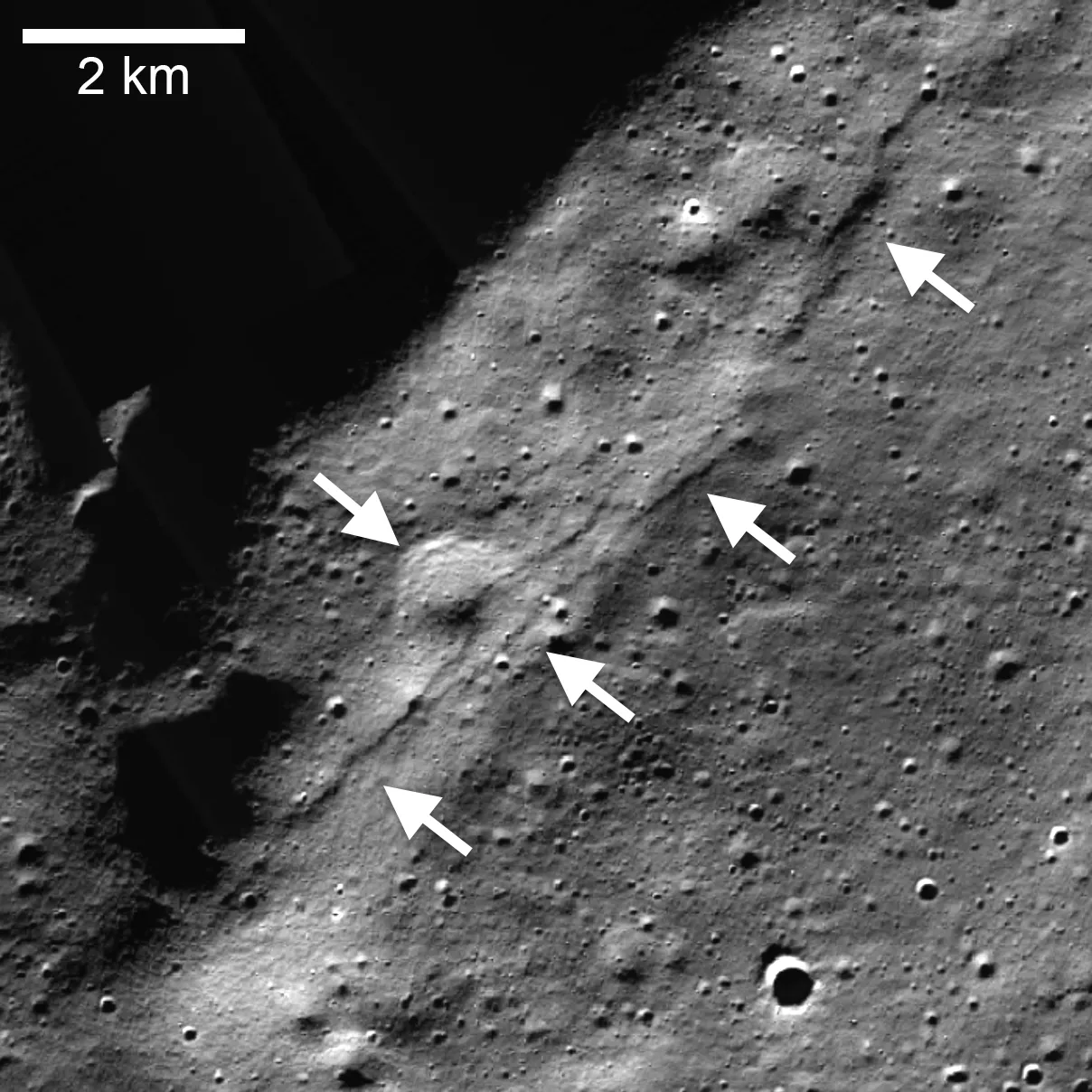Earth’s moon is a constant in the night sky, following predictable phases in its orbit. However, its size likely has been changing over time. A study published January 25 in the Planetary Science Journal found that the moon has shrunk more than 150 feet in circumference as its core gradually cooled over the past few hundred million years.
[Related: The moon is 40 million years older than we thought, according to crystals collected by Apollo astronauts.]
A team of scientists from NASA, the Smithsonian, Arizona State University, and The University of Maryland discovered evidence that the continuing shrinkage led to some surface changes around the Lunar South Pole. The terrain has even changed in areas where NASA hopes to land during the crewed Artemis III mission.
How the moon is like a grape
This lunar shrinking process looks similar to how a grape wrinkles when it becomes a raisin. The moon also wrinkles and creases as it shrinks down. However, a grape has a flexible skin, while the moon has a brittle surface. The brittleness causes faults to form where sections of the crust push up against each other.
The fault formation caused by this continued shrinking often comes with seismic activity like moonquakes. Any locations near these moon fault zones could pose a threat to human exploration there, the same way that those living near fault lines on Earth face a greater risk of earthquakes.

In the new study, the team linked a group of faults in the moon’s south polar region to a powerful moonquake recorded by Apollo seismometers over 50 years ago. They used computer models to simulate the stability of surface slopes here and found that some areas in particular were vulnerable to lunar landslides from the seismic activity.
“Our modeling suggests that shallow moonquakes capable of producing strong ground shaking in the south polar region are possible from slip events on existing faults or the formation of new thrust faults,” Thomas R. Watters, study co-author and senior scientist emeritus in the National Air and Space Museum, said in a statement. “The global distribution of young thrust faults, their potential to be active and the potential to form new thrust faults from ongoing global contraction should be considered when planning the location and stability of permanent outposts on the moon.”
Shaking for hours
Shallow moonquakes occur only about 100 or so miles deep into the moon’s crust. They are caused by faults and can be strong enough to damage equipment and human-made structures. Earthquakes tend to last for only a few seconds or minutes at most. Shallow moonquakes can last for hours and even a whole afternoon. The team connected the magnitude 5 moonquake recorded by the Apollo Passive Seismic Network in the 1970s to a group of faults detected by the Lunar Reconnaissance Orbiter more recently. This means that this seismic activity could devastate any future hypothetical settlements on the moon.
[Related: 10 incredible lunar missions that paved the way for Artemis.]
“You can think of the moon’s surface as being dry, grounded gravel and dust. Over billions of years, the surface has been hit by asteroids and comets, with the resulting angular fragments constantly getting ejected from the impacts,” study co-author and University of Maryland geologist Nicholas Schmerr, said in a statement. “As a result, the reworked surface material can be micron-sized to boulder-sized, but all very loosely consolidated. Loose sediments make it very possible for shaking and landslides to occur.”

The team will continue to map out this seismic activity on the moon, hoping to pinpoint more locations that could be dangerous for human exploration. NASA’s Artemis missions are currently scheduled to launch their first crewed flight in September 2025, with a crewed moon landing scheduled for September 2026. One of the ultimate goals of these future missions is a long-term human presence on the moon.
“As we get closer to the crewed Artemis mission’s launch date, it’s important to keep our astronauts, our equipment and infrastructure as safe as possible,” Schmerr said. “This work is helping us prepare for what awaits us on the moon—whether that’s engineering structures that can better withstand lunar seismic activity or protecting people from really dangerous zones.”





